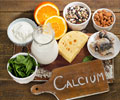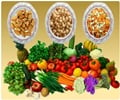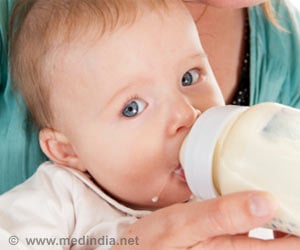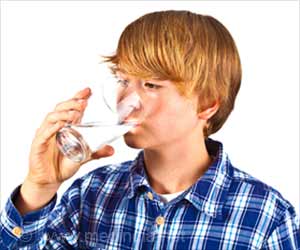American children are drinking too little milk and what they are consuming is too high in fat
"There is a strong correlation between dairy consumption and calcium," says Sibylle Kranz, assistant professor of nutritional sciences. "While there is calcium in fortified orange juice, for example, it is not as bioavailable as that found in milk." She notes that people need to take calcium with vitamin D and some protein for optimal use in the body.
Kranz, working with Po-Ju Lin, doctoral student and David A. Wagstaff, statistician, looked at children's average daily dairy intake and compared it with that recommended by the U.S. Department of Agriculture's My Pyramid dairy recommendations and Adequate Intake of calcium for various ages from 2 through 18. Their findings, reported online in press in the Journal of Pediatrics, are that only 2 to 3 year olds meet the MyPyramid dairy recommendations.They also noticed that most children choose to consume more of the highest fat varieties of cheese, yogurt, ice cream and dairy-based toppings.
The various recommendations for dairy intake in children established by a variety of organizations suggest two cups for 1 to 3 year olds, two to three cups for 4 to 8 year olds, and three to four cups for 9 to 18 year olds depending on the recommending agency.
Only the youngest age group met these requirements. Among 4 to 8 year olds, consumption dropped below two cups a day and remained steady for 9 to 13 year olds, and declined again among 14 to 18 year olds. All these dairy and calcium intake patterns were observed while the recommendation increased to three and then four cups daily.
"Although the recommendations are all for low fat dairy," says Kranz. "People are still consuming great amounts of whole fat dairy products."
The researchers found that 43 to 51 percent of the dairy consumed by younger children was from whole-fat sources with only 5 to 11 percent from non-fat dairy. Older children consumed about 35 to 36 percent from whole-fat dairy and 11 to 13 percent from non-fat dairy sources.
Advertisement
The Penn State researcher notes that these additional calories can add to the current problems of childhood obesity. The difference between whole-fat and reduced-fat mozzarella cheese is 20 calories per ounce with another 30 calories if the cheese is fat free.
Advertisement
Also, researchers noted that dairy consumption patterns have not changed recently. Although physicians once recommended that children receive whole milk during the first year of life, that recommendation is no longer true. Doctors now recommend consumption of baby formula if the child is not nursing.
Starting with the second year of life, reduced-fat or fat-free milk is appropriate. However, children are still drinking whole-fat milk.
A cup of milk provides 250 to 300 milligrams of calcium, a cup of low-fat yogurt contributes about 400 milligrams of calcium and an ounce of cheese includes about 200 milligrams of calcium. In dairy products, about 32 percent of the calcium is bioactive and used by the body. Other sources of calcium such as soy milk and fortified orange juice at 300 milligrams are only about 25 percent available.
Dairy products in general are the best sources of calcium for children, but knowing this and getting children to eat more low-fat dairy options (yogurt, cheese and milk) are not the same thing.
Kranz suggests that one solution would be non-fat, non-sugared flavored milk products. These can range from milk with a little cocoa powder to milk blended with strawberries or blueberries.
Currently, only 9 percent of 2 to 3 year olds’ dairy consumption is flavored milk, 4 to 13 year olds drink more flavored milk --16 to 18 percent, while 14 to 18 year olds are at 13 percent.
Source-Eurekalert
SPH/C











